Name C. Radhakrishnan | ||
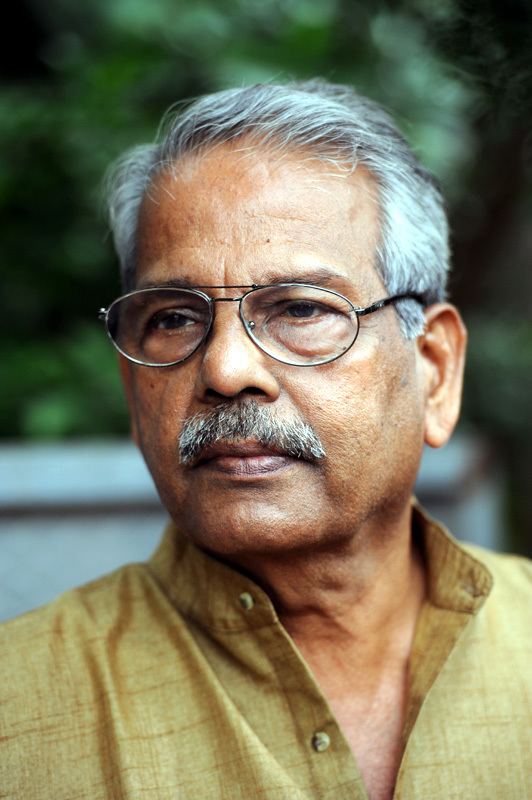 | ||
Movies Ottayadipathakal, Pushyaraagam, Pinnilavu, Kanalaattam Similar People Madhu, Kaviyoor Ponnamma, P G Viswambharan, Thoppil Bhasi, Jayan | ||
C Radhakrishnan (writer) in Yathra |Chamravattam|Yathra 23 Jan 2016
C. Radhakrishnan (15 February 1939) is a writer, physicist, researcher and film director in Malayalam language from Kerala state, South India. He is the author of some of the major novels in Malayalam like Munpeparakkunna Pakshikal, Theekkadal Kadanhu Thirumadhuram, Spandamapinikale Nandi, Ellaam Maikkunna Kadal and Nizhalpadukal, and the scientific commentary and work Bhagavad Gita: Modern Reading. Radhakrishnan graduated in physics from Zamorin's College, Calicut and was Winner of Top Rank Gold medal, served as Scientific Assistant at Astrophysical Observatory, Kodaikanal from 1960 to 1962, and was Officer-in-Charge at World-Wide Seismology Centre, Pune from 1962 to 1964. A physicist turned writer, he was honoured by both the National Literary Academy of India (1989, for Spandamapinikale Nandi) and the Kerala Literary Academy (1962, for Nizhalpadukal). He was conferred the Vayalar Award (1990, for Munpe Parakkunna Pakshikal), Mahakavi G. Award (1993, for Verpadukalude Viralpadukal), Mooloor Award, Dr. C. P. Menon Award (for Aalochana), Achuthamenon Award (for Munpeparakkuna Pakshikal), Abudhabi Malayali Samajam Award (1988, for Munpeparakkunna Pakshikal), Pandit Karuppan Award, Devi Prasadam Award, Lalithambika Award (2004, for his total contribution to Malayalam literature) etc. His works have been translated into various Indian and foreign languages. He was chosen for the Padmaprabha Puraskaram in 2007. In July 2014, Radhakrishnan was awarded the Moortidevi Award for the year 2013 for his novel Theekkadal Kadanhu Thirumadhuram. He was conferred the Ezhuthachan Puraskaram for the year 2016. Other literary recognitions include the Mathrubhumi Literary Award in 2015, K.P.Kesava Menon memorial award in 2016, the Madhava Mudra, Nalappadan Award and Thrikkavu Devi Puraskaram.
Contents
- C Radhakrishnan writer in Yathra ChamravattamYathra 23 Jan 2016
- Interview with C Radhakrishnan writer
- Childhood and family origins
- Education
- Initiations
- In Delhi
- Marriage and family
- Later media services
- Vision
- Creative writing
- Formal research
- Science journalism
- Journalism
- Films
- Physics research
- Recognitions
- References
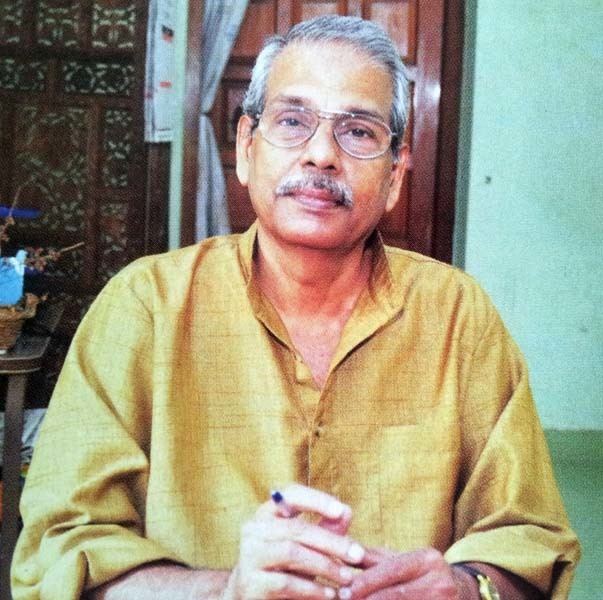
Apart from Malayalam fiction, C. Radhakrishnan has also authored many physics articles. A book on physics titled The Secret Behind the Universe was published in July 2016. The author's researches in physics were published as an article titled Avyakta: The Fabric of Space in the Prespacetime Journal in January 2017.
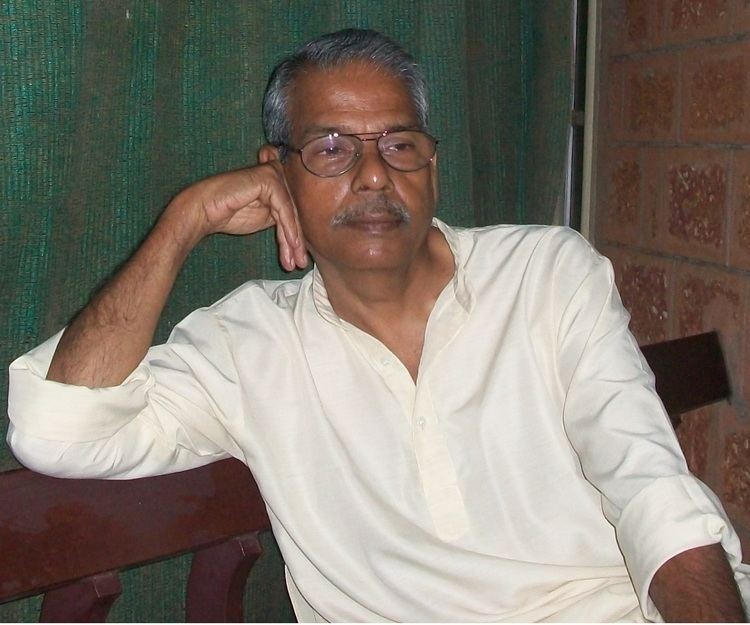
Radhakrishnan was the editor of Malayalam magazine Piravi published by the School Of Bhagavad Gita. He was the former chief editor of Madhyamam daily from 16 August 1999 to 1 September 2001. He was also editor-in-Charge of Year-Books and Bhashaposhini, Malayala Manorama, from 1994 to 1997.
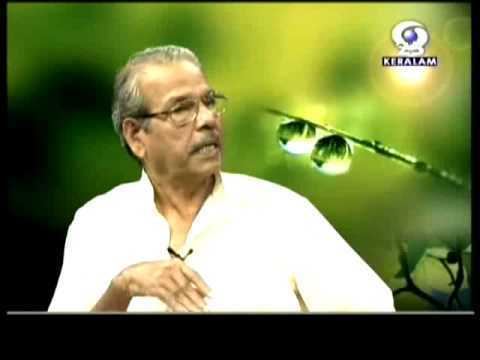
Interview with C Radhakrishnan, writer
Childhood and family origins
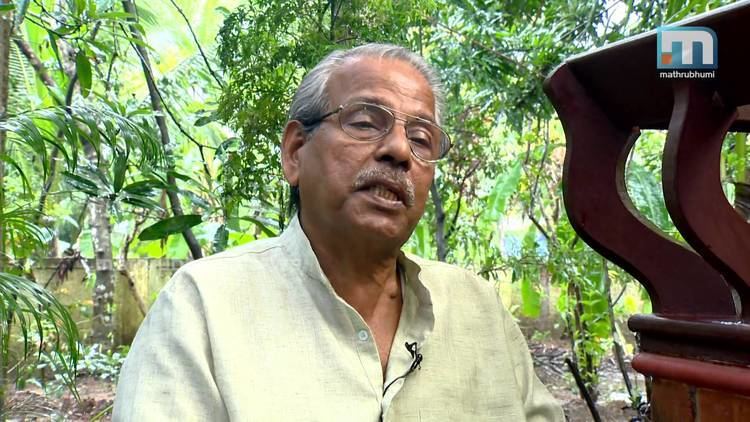
Chakkupurayil Radhakrishnan was born on 15 February 1939 in Chamravattom (a village in Tirur) in Malabar District, which was then a part of the Madras Presidency of British India), to Parappur Madathil Madhavan Nair and Chakkupurayi Janaki Amma. The author remembers his grandfather, Krishnan Nair, as a man of high erudition and simple disposition. Farming and teaching were the traditional ways of life in the family. Radhakrishnan's father Madhavan Nair was a school teacher for a brief while before joining the freedom movement; he was part of the extremist wing of that movement and therefore remained underground most of the time. Radhakrishnan's mother, Chakkupurayil Janaki Amma, a traditional housewife, was initiated into devotional poetry and community arts in early childhood itself. Her own mother had succumbed to smallpox immediately after giving birth to her and her survival was almost a miracle. She married her uncle's son as was customary and the author remembers that she was doubly dear to the Patriarch of the joint-family.
Radhakrishnan grew up in the care of his grandpa as his father was away most of the time. Born at the time of beginning of the world war (15 January 1939), he was just five when the war ended heralding recession, famine and an epidemic of cholera. In his village there was scarcity of food and no medical help. The author remembers that electricity was yet to arrive and motor vehicles were unheard of in the village, and in his childhood, technology only meant kerosene available in precious little measures and the luxury of a box of matches.
The author remembers healthy people he knew succumbing to cholera in a matter of hours and corpses heaped up for want of people and transport to bury. He also has touching memories of how people loved and cared for each other, sacrificed and shared as much as they could even amidst dire need and misery. ‘Floods devastated the village year after year during the monsoon. Kitchens went damp and fruits were, if and when available, the only means of subsistence for days together,’ recollects the author. Incessant rain and gusty winds added to the diseases and helplessness. All along, the child sat on his grandpa's lap listening to stories from the Upanishads, Ithihasas and Puranas. 'Hunger melted in lullabies, installing unforgettable images and tunes.' Radhakrishnan also recalls that as a child his mind registered the nature of unjust power in the form of some rude policemen coming in to threaten grandpa as the latter humbly submitted that he did not know his son's whereabouts. It was also about this time that his grandparents imparted to him the story of Tunjathu Ramanujan Ezhuthachan (the father of Malayalam language) as handed down through generations. He learned from them that his ancestral family name "Chakkupurayil" indicated the spot where the oil press for the village functioned long back, to manually operate which Ezhuthachan was forcefully employed by the then rulers as punishment for ‘teaching Vedas to all castes and opposing the injustices brought about by "Chaturvarnya"'. He heard from his grandparents that Ezhuthachan was an ancestor in his lineage, and this and other details of the information imparted to him formed the basis for creation of one of his most famous works later - the biography of Tunjathu Ramanujan Ezhuthachan titled Theekkadal Kadanhu Thirumadhuram.
Education
By the time the Radhakrishnan was to be enlisted for primary education, India had gained freedom and news spread that Gandhiji has demanded the dissolution of the Indian National Congress on the ground that the nation needed grama swaraj and not party democracy. As a consequence many including the author's father resigned from that party.
Radhakrishnan recollects that those days a child did not have to be presented for admission; it was enough if the parent went and signed up. So, when on the appointed day Radhakrishnan was sent to school for the first time with his elder cousin, he did not know what the school looked like. The cousin took him to the backyard of a deserted temple saying it was the school and went his truant way to play with the like-minded. The novice sat playing with the sand and also practicing to write ‘hari sri’ as his mother had showed him how to. This went on for some days till the bluff was called. The real school, a long hall with tiled roof, without partitions, windows, bars or panes, was much less attractive than the backyard of the temple but Radhakrishnan recollects that the class-teacher's care and attention more than compensated. At the Secondary and Higher Secondary stages too, the author gratefully remembers there were teachers ready and willing to ascertain the aptitudes of students and cater accordingly. Moreover, he had to cross the one-kilometer river Bharathappuzha to and fro every day; he came to regard this river with its changing moods, clean and spotlessly white sand dunes and pristine streams as his other school.
Radhakrishnan finished his school studies bagging the Best Student Gold Medal from Achutha Varier High School, Ponnani, and went on to become winner of Madras University Sharpe Scholarship. He graduated with physics major (Top Rank Gold medal, Zamorin's Guruvayurappan College, Kozhikode), the subject that fascinated him as much as languages did. He then went for post-graduate studies in applied physics but had to discontinue it just towards its very culmination due to paucity of funds. But he later declared that the good part of it was he had identified a problem in cosmology he was to grapple with for the next sixty years, and he also happened to write his first novel due to this!
Initiations
Radhakrishnan translated Daniel Defoe (M. Flanders) and Lincoln Barnett's The Universe and Doctor Einstein at age seventeen. He translated David O. Woodbury's Outward Bound for Space in 1962.
The Malayalam novel Nizhalpadukal (Patches of Shade) was written as a means of recreation in between exercises with mathematical equations. Not knowing what to do with this work, the young author tucked the manuscript in a corner till Mathrubhumi Weekly, the most established literary magazine in the language, announced a novel-writing competition for freshers. Of the 120 entries, this work was given the prize; the Weekly serialized it; a reputed publisher brought it out and, to crown it all, the Kerala Sahitya Akademi gave it the best work award for the year 1963.
C. Radhakrishnan took up his first job as Scientific Assistant at Kodaikanal Observatory in 1960. This provided the chance to deal deeper with problems related to cosmology which continued intriguing him. Though mostly outdated, there was a great library there and plenty of observational data. It was from here that the author published his first letter in Nature Journal – which was about disturbances in earth's magnetic field created by solar flares at the equator. But to his deep disappointment, not only was the young physicist discouraged by his superiors at the Observatory, but he also recollects someone at the higher level of the Department disliking the young man going anywhere near affairs he was supposed to be too junior to approach. He was "transferred" to Pune, and that too to seismology, a totally different situation in which no further research to his liking was possible!
During that train journey to Pune Radhakrishnan remembers his introspection and identifying the four avenues which he decided to follow in the future in a later interview: the wisdom of the Upanishads imparted by his grandpa which needed close scrutiny in the light of modern science, physics to be reviewed in the light of the Upanishads so as to help identify a more wholesome picture, popular science writing to communicate whatever is new, and creative writing to explore the curvature of one's own psyche, those of others and that of the universe itself.
Radhakrishnan recollects that in those days service rules of the Central Government in India demanded that all research and findings should be cleared in advance by the higher authorities. But when submitted for approval, the young physicist continued to find to his dismay that no one cared to attend to the freshers’ valuable findings nor did anyone encourage them. Such experiences finally led him to abandon government service for ever and look for alternate employment. (The author himself remarked in later times that "India has no shortage of talent or scientific genius, but here the establishment continues to either stifle creativity or tries to steal the works of unaided junior researchers for personal gains. If we could break these shackles, find ways to pick out talent and provide enough encouragement, nothing can stop India in reaching the heights She is destined for.")
In Delhi
After leaving government service Radhakrishnan joined the editorial team of Times of India's Science Today magazine, the first ever popular science publication in the country. The work also provided the opportunity for the author to meet and interview great achievers like Jacob Bronowski (Common Sense of Science fame).
Radhakrishnan then took his job as Assistant Editor of Link Weekly and Patriot Daily at Delhi, which provided access to the political greenroom of the nation and even the scenario at international level. The venture to report left extremist action in West Bengal was the highlight of this four-year period. But Radhakrishnan was held by the extremists and not allowed to return to Delhi after the two weeks assigned by his paper; they maintained he knew too much to risk arrest and interrogation and kept him under "arrest" for three months during their "action" which meant being constantly on the run. After days of extreme danger and deprivation, the gang was ambushed by the police, killing many and taking the rest; the "reporter" told the police officer the truth, and fortunately for him the IPS man was ready to check his antecedents and kind enough not only to free him but also to provide him with the means to make himself presentable and catch a train back to Delhi. These first-hand experiences played a major part in the work of one of his most popular Malayalam novels – Munpeparakkunna Pakshikal which dealt with the left extremist upsurge in northern India.
Radhakrishnan left Delhi with the declaration of National Emergency when the media became the first target of the undemocratic power centre.
From then on he selected a writing career but for short stints at professional help to major print media organs in Kerala.
Marriage and family
The author married Vatsala, daughter of Kanattil Devaki Amma and Terampath Gopala Kurup. She is the last but one of their seven children. Her father, a friend of the author's father, was in the freedom movement with him. Both had ‘invested’ most of their considerable private property in winning freedom for the nation, but the author notes that the politicians who came to power after India's independence turned out to be in no hurry to provide for such people who lost all their possessions and suffered a great deal for India's freedom. Stark poverty makes one dread facing the prospect of it again. Even then, after living in Delhi for a year after marriage, when Vatsala was told about the Emergency, she suggested going ‘home’ to live on what could be obtained from writing, however meagre.
During all the years of prudent living the author remembers no occasion she ever complained. She helps read proofs, prune texts and serves as the first reader of everything he writes. They have a son, Dr. Gopal, specialized in radiology. He researched history, edited, compiled and helped with publishing besides sharing the efforts at final formation of the physics research article recently published in the Prespacetime Journal (PSTJ). Dr. Gopal married Subhadra, a computer professional, and has three boys, Harigovind, Navneet Krishnan and Harikrishnan.
Later media services
After leaving Delhi in 1976 and returning to Kerala, Radhakrishnan became editor of Veekshanam Daily (from 1980 to 1984). Later on he also served as editor-in-Charge of Year-Books and Bhashaposhini, Malayala Manorama, from 1994 to 1997. Radhakrishnan also held the position of editor of the Malayalam magazine Piravi, published by the School Of Bhagavad Gita, and was chief editor of Madhyamam Daily. He was also spoken Word and Literary Content Provider for several stations of All India Radio and served on Programme Advisory Committees.
Vision
‘Every living thing tries to estimate the depth and breadth of the waters it swims in,’ says Radhakrishnan, ‘with an eye on what is real and true. Creative work, therefore, is philosophical processing.’ Acquainted early in life with the essence of the Upanishads, he tries to interpret experiences in philosophical light, each literary work becoming a commentary in its own way; with the culture and methodology of modern science keeping the derivative process on logical tracks.
Radhakrishnan mentions that in his works he has tried to work out three solutions to the science-philosophy equation: 1) Science is made the backbone of reason and also the detergent to cleanse philosophical edifices and the traditions that follow from them of all dirt accumulated through the ages on account of blind faith. 2) Philosophy is brought to bear upon science so as to give the latter a heart and hope. 3). Each is made the instrument to advance the prospects of the other and lead to the harmonious integration of the two. ‘Man,’ he explains, ‘has come this far walking on these two legs and there are no more than a few vital steps to final victory. Feeling assured of it, I have attempted the first ever scientific study of the Bhagavad Gita devoid of religious consideration or superstition, highlighting the vision of Vedanta; and also suggested modifications in the cosmological model that will dissolve all riddles road-blocking physics.’
Whether in science or literature, Radhakrishnan says he approaches the content as a "problem" that has to be "solved". ‘If it is an intellectual problem in science it is an emotional one in arts. This makes derivations logical in aesthetics too. Moreover, the method helps avoid repetition. A "problem" once tackled is tackled for ever.’
Radhakrishnan's models are the Upanishads, epics like Ramayana and Mahabharata, and the works of great classical Sanskrit writers like Kalidasa. This, he says, enables him to keep his sights at the highest plane and angle and not be swayed by the vagaries of the small items of the day, the month, the season or the year; and helps him focus steadily on his intent of cultural evolution. ‘If everybody lives for everybody else and everything else too, that is heaven right here. Just discard the foolishness that holds one back from realising it. Organizations are not the answer; in fact they are counterproductive as any organization divides the society, creates enmity, lack of love, double standards and vitiates the atmosphere. One can easily check whether one is on the right track. Just ask the question "Am I prompted by love or hate?"’ C. Radhakrishnan says that in his works he has attempted to integrate the cultures of science and the arts, to defeat division of every kind and to herald a unified world. ‘Humankind is one, irrespective of religion or caste or creed or nationality. Commonsense will take man to that day when all borders – outside and inside – will cease to exist, and if it doesn’t evolution certainly will. For I believe this is the only solution that mankind has, and I look forward to the day it finally happens.’
Creative writing
Radhakrishnan defines fiction as ‘looking at the familiar world in a new light so as to re-evaluate experiences better or creating a new world to experiment with an otherwise unresolvable emotional problem’. He began with the latter and moved on to the former to write nine major novels – Ellaam Maaikkunna Kadal, Puzha Muthal puzha Vare, Pullippulikalum Vellinakshathrangalum, Spandamapinikale Nandi, Ivide Ellavarkum Sukham Thanne, Verpadukalude Viralpadukal, Munpeparakkunna Pakshikal, Karal Pilarum Kaalam and Iniyoru Nirakanchiri – in that order, dealing with all aspects of the angst brought in by the sudden onslaught of technology into a caste-ridden semi-feudal society. This nine-novel series, popularly called ‘Novel Navakam’, is in fact a trilogy of three trilogies: one on Kerala, another on India and the third on the world at large.
His last work to date, the biographical novel on Ramanujan Ezhuthachan – the Father of Malayalam Language, too belongs to this category with the significant difference that the period dealt with is somewhat further back - 15th-16th centuries – the dawn of renaissance in this part of the world.
In between there are scores of novelettes, plays, essays, poems, reviews and many short stories. Many of his works have been translated to English and other languages. Notable English translations include Birds That Fly Ahead, Heart-Rending Times and Now for a Tearful Smile.
Formal research
The equipment for stellar studies at Kodaikanal during the time the author worked there consisted of the 18-inch Bhavanagar telescope, a spectroscopy tunnel and a small radio paraboloid – the last mostly for study of diurnal variations of solar radio emissions and only sparingly and marginally used for night-time observation. There were, in addition, means to watch the earth's magnetic field and ionospheric layering so that stellar and cosmic ray interferences in terrestrial conditions could be assessed.
Radhakrishnan used the few years he spent there to read up classical astrophysics, take notes, skim the data already piled up and watch deep space and far constellations whenever he could. All this helped crystallize the ideas for his future research with conviction and clarity.
Science journalism
‘If you want to make sure you have understood a theory, try to present it to another who hasn’t; in the process you will master it too,’ says the physicist turned author. ‘That is perhaps why the urge to share knowledge is so commonly human. Lay emphasis on the physical concept is the trick if the maths proves too tough; if the "idea" is installed maths can easily follow for those who dare wrestle with it.’ The author strongly believes that popular science makes the common man more aware of the world and the processes around him and also instils the habit of flawless reasoning which helps him get free of superstitions and exploitation based on them.
At the age of 22 Radhakrishnan became a member of the core group of the newly formed Kerala Sastra Sahitya Samiti, which later developed into the Kerala Sastra Sahitya Parishad and brought a sea of change to the level of popular awareness and vigil in Kerala. At 25 he was spearheading the launch of the first ever popular science magazine on the national scene.
As revealed to an interviewer by him: ‘Popular science fails if it turns out to be too scientific for the common man and not enough scientific for the scientist at the same time.’ Asked why he has collected only very few of his popular science writings he reveals: ‘Most of it gets outdated overnight.’
Journalism
‘If you are a journalist you are the first to know what is going on,’ he says, and ‘One has to cultivate eternal alertness’. ‘It helps improve your language skill – the ability to be precise, short, matter-of-fact, pleasant and even entertaining at the same time. No wonder many great writers have been great journalists too.’
In all the author spent about 12 years with the print media and looks back at each episode of it with nostalgia. However, handling news copy all day spoils the appetite for creative writing, so he had to backtrack again and again from senior editorial positions to devote time to report from within.
Films
While working with the World-Wide Seismology Centre at Pune, Radhakrishnan took quarters close to the erstwhile Prabhat Film Company where the Film and Television Institute of India was being newly set up. The Curator Mr P K Nair was struggling for want of assistance in cataloguing text books and cleaning and filing classical films beginning with those of the silent era. Starting as a casual volunteer, Radhakrishnan became a serious but informal student. The physics, chemistry and grammar of film-making became easy to him.
Veteran film artist Madhu (actor)Madhu, a product of the National School of Drama in Delhi, selected one of Radhakrishnan's novels to make his first film and asked him to do the screenplay too. The author was also invited to be there during its production and post-production work.
Four years later Radhakrishnan wrote and directed his first feature film Agni. ‘Films,’ he maintains, ‘should be aesthetically good and popular at the same time as against the dictum slowly coming into force then that "art" films, as a rule, have got to be unpopular and incomprehensible to the masses'. Agni became the first ever Malayalam film in the Indian Panorama of Feature Films. Later on he directed Kanalaattam and Pushyaraagam. In all Radhakrishnan made four feature films. The last one made in 1993, Ottayadipathakal, too is part of the Indian Panorama.
Asked why make films at all he revealed, ‘there are emotions that one can’t express in thousand words but presentable with just a photograph or a sketch. Fresh possibilities open up in expressions that can be carried out better through images.’ When asked why he stopped making films, he explains: ‘While I write my limitations alone reflect in the work, but when I make a film those of a large number of people come into play. Corrections are not easy; often impossible. One is made to compromise and is left unsatisfied in the end.’
Physics research
During his writing career, C. Radhakrishnan continued his physics research, and he says that he had much productive hours ‘without institutional help, laboratories, billion-dollar projects, grants, super-computation and such paraphernalia’. His researches progressed through thought experiments, and primary studies on problems fundamental to astrophysics were completed as early as in 1961. The earliest work that resulted from these researches was a monograph titled Unity of Space-Matter Manifestations published in January 1988. Stuff and Style of the Universe, a book which is a popular science elaboration of the monograph, was published in Nov. 2002 by Hi-Tech Books. An article based on the book was also published in Science India (ISSN 0972-8287) in two issues, which came out on September 2012 and October 2012 (Vol. 15 No. 9 and Vol. 15 No. 10 respectively). Later researches, along with his son Dr. K. R. Gopal, resulted in the book The Secret Behind the Universe, published July 2016, in which the original ideas were further refined and updated, and a new cosmological model based on the fabric of space (Avyakta) was introduced to complement the Standard Model and explain gravitation. A condensed version of the physics section of this book was published as an article titled Avyakta: The Fabric of Space in the Prespacetime Journal ISSN 2153-8301 (Vol 7 Issue 16).
Recognitions
Among awards conferred to Radhakrishnan are the Ezhuthachan Puraskaram, Bharatiya Jnanpith's Moortidevi Award, National Sahitya Akademi Award, Kerala Sahitya Akademi Award, Vayalar Award, Odakkuzhal Award, Lalithambika Award, Olappamanna Award, Balamani Amma Award, Achutha Menon Award, Abudhabi Sakthi Award, C. P. Menon Award, Muttathu Varkey Award, Devi Prasadam Award, Mahakavi G Award, Pandit Karuppan Award, Mulur Award, Padmaprabha Literary Award, Sanjayan Puraskaram, Amritakeerti Puraskaram, Chandu Menon Award, Bahrain Award, Oman Prathibha Puraskar, Vallathol Award, Fellowship of Kerala Sahitya Akademi, Jnaanappana Award, Naadabrahma Award, Madhava Mudra, Thakazhi Award, V. T. Award, Mathrubhumi Literary Award, K. P. Kesava Menon Puraskaram, Nalappadan Award, Mayilppeeli Puraskaram and Thrikkavu Devi Puraskaram.
'Awards are most effective if given sufficiently early,’ Radhakrishnan says and substantiates it by pointing out that the Kerala Sahitya Akademi Award he got for his very first work at age 22 was enough encouragement to keep him going steady for the next two-and-half decades, despite no recognition of any kind coming his way during that period. ‘Awards won at the other end of life are no more than consolations and best motivate the youngsters of the time with the idea that they too stand a chance at least towards the fag end of life!’
Awards, according to Radhakrishnan, can also generate strife among writers or distract them. The "value" of the next award haunts while one sits down to write ("value" being the purse – the author points out that media and people regard the greatest award is the one with the largest cash prize). ‘I have valued and cherished genuine love and respect more than cash prizes, for some of the former situations have made me incredibly more happy than any amount of cash can provide,’ he says. (The author donated the money part of the very first award to a poor home in Calicut, that of the Abu Dhabi Sakthi Award to the Chief Minister's Relief Fund, the National Akademi award money to the Prime Minister's Relief Fund and the Vallathol award fund to a school for children with special needs at the birthplace of the great poet.)
